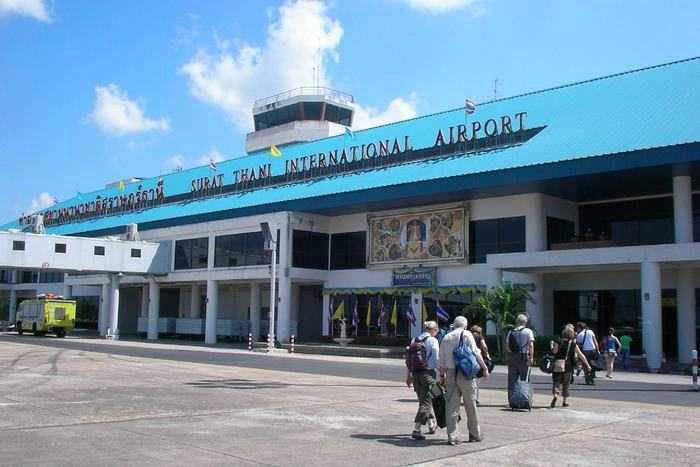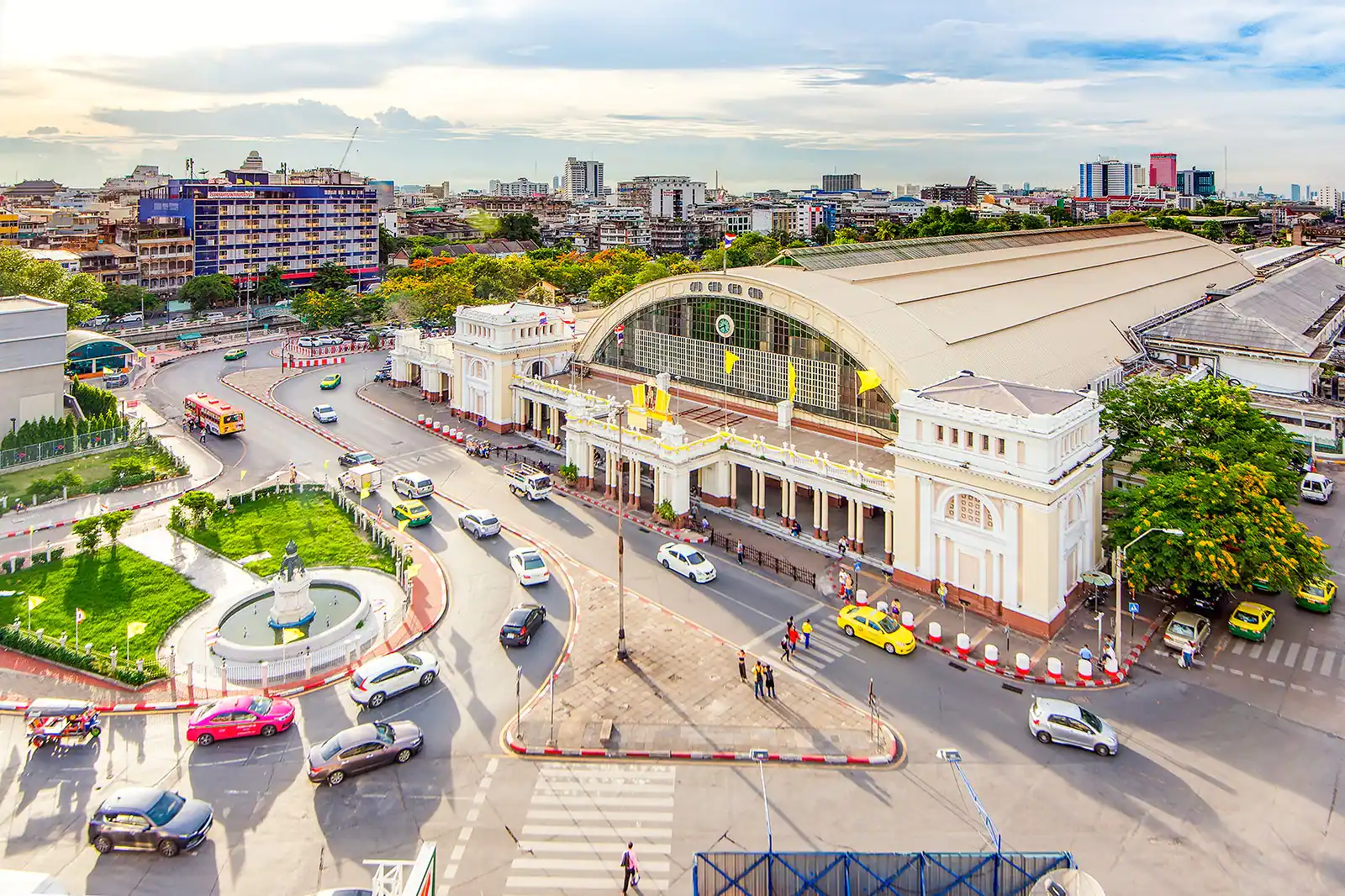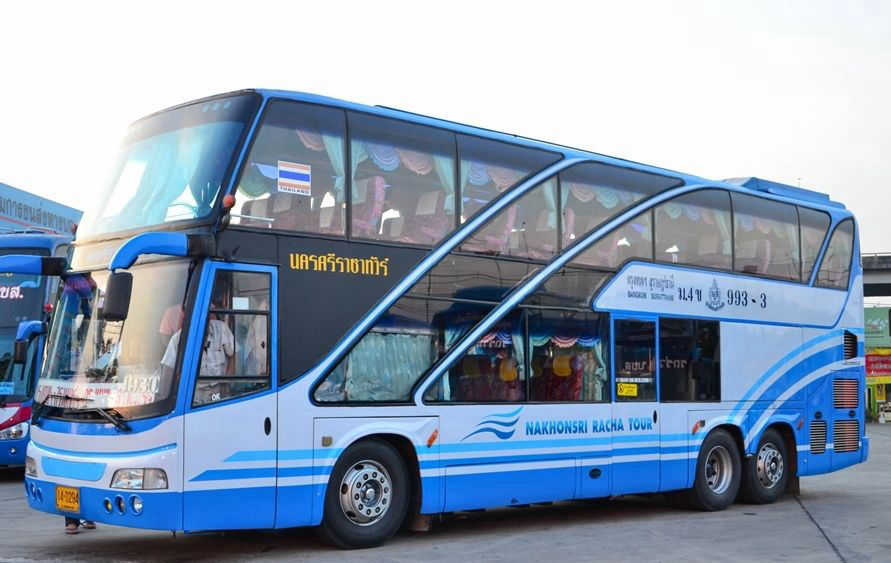

Take a Flight
During the low and shoulder seasons (March to November), the one-hour flights to Surat Thani International Airport (URT) from Bangkok costs the same as taking the train and are the best choice for a quick and comfortable trip down to your destination. During high season, however, flight prices can easily triple, especially if you don't book well in advance.
Budget airlines—including Air Asia, Thai Lion Air, and Nok Air—depart from Bangkok's Don Mueang Airport (DMK) at least 10 times per day and are a good choice if your main concern is low prices and you don't mind flying with just the basics. This means no free food or drinks on board and often no checked luggage included in the price. If you want a little more comfort, Thai Airways offers more expensive flights that depart from Suvarnabhumi Airport (BKK), Bangkok's main airport, and include onboard meals and other extras.
All flights arrive at the Surat Thani International Airport (USM), located 20 kilometers outside the town center. Tuk-tuks are always waiting outside for easy transportation, but remember to negotiate a ride fee before you set off to avoid being overcharged. You can also catch the bus into town. It will cost you less but takes around one hour. Regular Bus and Minivan services leave from outside the airport that run to the ferry piers in Donsak the main ferry terminals which serve Koh Samui and Koh Phangan.

Take a Train
Traveling to Surat Thani by train has its pros and cons. Trains are more comfortable than buses, especially if you choose a sleeper train, where you can sleep away part of the long journey. During the day, you can watch out the window as the train crosses sleepy towns, rice paddies, and countryside greens, and even the buzz and hum of backyards and everyday life, giving you a peek into Thai life as you speed along to your destination.
Trains are also cheaper than flying, especially during high season (November to March), when railway tickets stay the same price but flight prices skyrocket. On the negative side, Thai trains are slow, and it can take up to 12 hours to get to your destination. If you're setting off for only a short vacation, using half a day just to get to Surat Thani is probably not worth it.
All trains to Surat Thani depart from Bangkok's Hua Lamphong Station. The fastest train leaves in the morning and takes eight hours and 40 minutes to get to its destination. This is a second-class, seats-only, air-conditioned train—and while you can't lie down for a nap, the seats are comfortable enough to make this option worth it if you're after the fastest train available.
The sleeper overnight trains (both first and second class) leave from Bangkok at 6pm or later and take 10-12 hours to get to Surat Thani. The main difference between first- and second-class trains is the location of the berths. First-class means a separate compartment with only two or four beds and a private washbasin, while in second-class, 20 or more berths are arranged along carriage walls. There's also a second class A/C seat train, which offers the comfort of a cooler ride but no beds. If you're trying to save money, these trains cost half the price of the sleeper AC trains.
Overall, overnight trains are a better option because you'll arrive at your destination in the early morning, when it's easier to find transportation to the town center. This is important because the Surat Thani Railway Station is about 15 kilometers outside the city, and you'll have to catch a bus or arrange a tuk-tuk to get to your hotel. If you're continuing on to Koh Samui, Koh Tao or Koh Phangan, the 6:30pm or 7:30pm trains are the best options, as they arrive in Surat Thani at the perfect time to catch ferries to the islands.
Update: Trains to Surat Thani now leave from the recently opened Krung Thep Aphiwat Central Terminal, also known by its former name Bang Sue Grand Station. Krung Thep Aphiwat Central Terminal, re-named by the King, is a major railway station in Chatuchak, the central passenger terminal in Bangkok and the current railway hub of Thailand.

Take a Bus
The cheapest way to travel to Surat Thani is on a bus departing from Bangkok's Southern Bus Terminal, Eastern Bus Terminal Bangkok Ekkamai, or Bangkok Bus Terminal Chatuchak, though schedules vary throughout the year. Buses leave either in the morning or after 5pm—there's a several hour break in between the morning (daytime) and afternoon (overnight) buses, so make sure you plan your trip well if you want to arrive in Surat Thani at a certain time of the day. The latest bus departs at 8:30pm.
Buses all take about the same amount of time (10-11 hours) as trains to reach their destination and are air-conditioned, with reclining seats and refreshments sold onboard. When there's no traffic, the Express buses can take as little as seven hours to reach Surat Thani, but don't count on it, and make sure you leave enough time to connect to a ferry.
In addition to regular bus seats, you can also catch a VIP bus to Surat Thani. These buses make fewer stops along the way and offer a bit of extra comfort in the form of more ample legroom, seats that recline farther back, and sometimes hot meals being served. Both regular and VIP tickets can be booked through an online travel portal or bought directly at the station, though waiting till the last minute means you might not get a seat and will have to wait for a later bus.
There are three main bus stations in Surat Thani (Talad Kaset 1, Talad Kaset 2, and Bor Kor Sor Mai). Most buses coming from Bangkok arrive at Bor Kor Sor Mai, but confirm this when you buy your ticket so you don't get stranded thinking you're somewhere else. Local orange buses run from this station right into downtown (just a few minutes away) or you can catch a songthaew (shared open pickup taxi) for an even quicker ride

Khao Sok National Park
If you're not pressed for time before heading to Koh Samui and want to experience the jungles in Thailand at their most primeval, then head to Khao Sok National Park in Surat Thani Province. This expansive national park in southern Thailand is brimming with rainforests and jungles, some of which are believed to be the oldest evergreen rainforests in the world. Khao Sok offers plenty of other activities besides trekking through the dense jungles, like visiting waterfalls, exploring caves, encountering wild elephants, and canoeing on Cheow Lan Lake. The national park also offers unique accommodation options, like the floating bungalows on the lake’s edge.